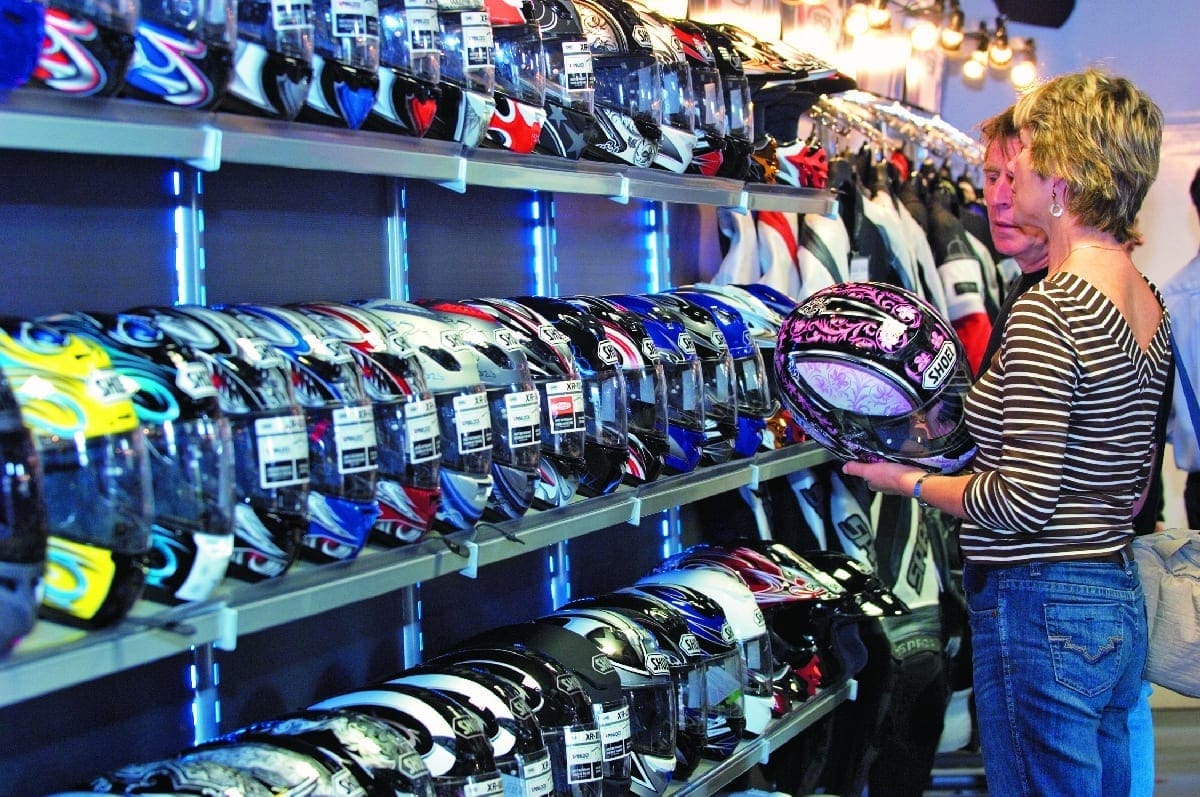 On 1 June 1973 it became the law in the UK for both riders and passengers to wear a fastened ‘safety helmet’ when riding a motorcycle, moped or scooter.
On 1 June 1973 it became the law in the UK for both riders and passengers to wear a fastened ‘safety helmet’ when riding a motorcycle, moped or scooter.
Why
Despite protests regarding freedom of choice, it is possibly one of the most sensible laws regarding two-wheelers that has been passed. Granted, as anyone who has ridden on a hot summer’s day without a skid lid knows, it can result in a wonderful sensation of liberty. However, despite some suggesting that not wearing a crash helmet made people ride with more care, I’ve done the ‘sliding along the road at a rate of knots’ courtesy of a car driver’s ‘momentary lapse of concentration’ and know that gravel rash in my legs is bad enough, heaven knows what it would be like on your head…
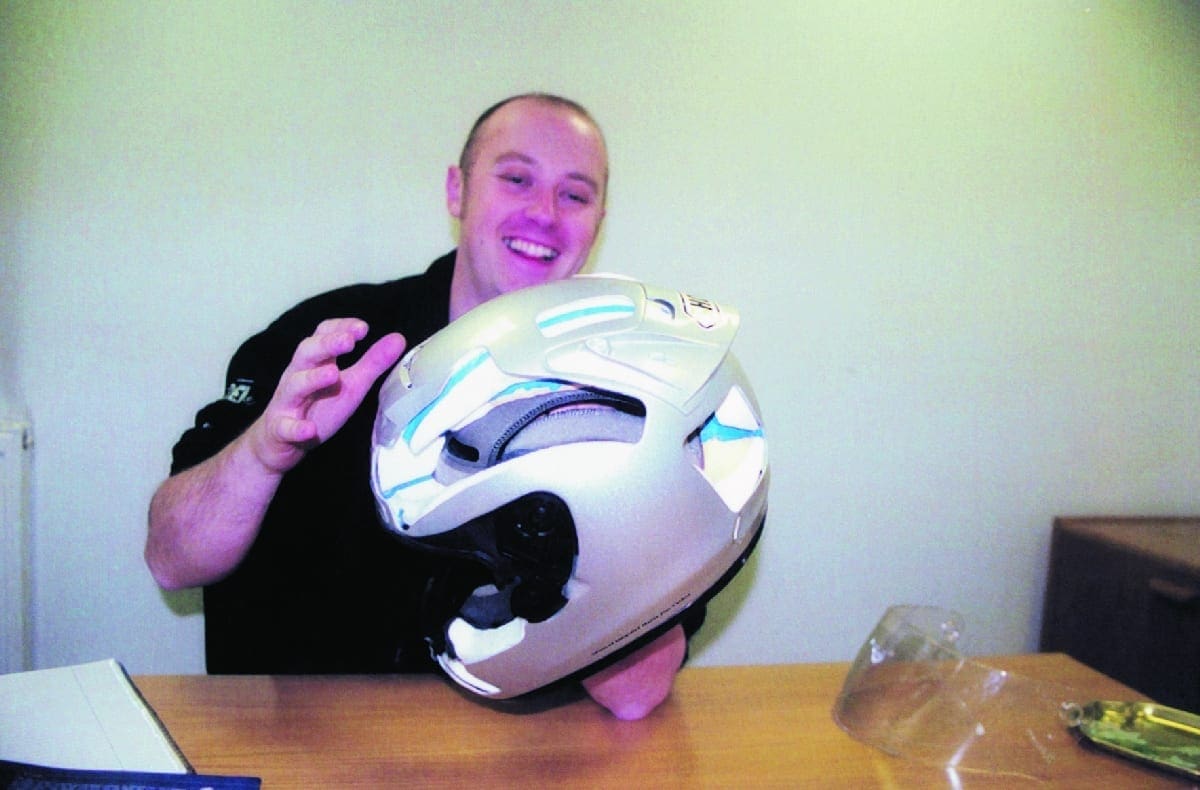
In Stone
My first crash helmet cost me a tenner and was a well-worn secondhand lid I bought off a friend at school because I wanted something to prevent me from getting stopped by the police. I think that was a Firebird or something like that and I simply didn’t know any better. I then splashed out on a brand new plastic Centurian (all of about £30!) but it was some local bikers who first educated me further about helmets (and the wiring on my Vespa 50!), the result being an expensive Bell fibreglass lid. Luckily for me I had my first ‘big’ accident in this and once well enough to examine it afterwards I was most glad of this posh helmet, and I’ve never looked back since.
As we’ve seen recently with the influx of cheaper scooters and parts from the Far East, it should be no surprise to learn that helmets are also now available in the UK, However, as with certain budget scooters that struggle to stand up to a hardy British commute, buying a cheap helmet can be a false economy and even potentially dangerous.
I still use the rule of thumb that you ‘buy a 10p helmet for a 10p head’. With the amount of miles I ride and the state of traffic on the roads these days (and I know this is going to sound corny), both I and Sticky use a helmet we can trust in and that fits well, which for the last seven years or so has meant wearing a Shoei, a company with a good reputation.
Who better to quiz therefore about crash helmets than Rob Fairburn, marketing manager for Feridax (1957) Ltd, the UK importer and distributor for the Japanese Shoei range of helmets. We asked him to explain why there’s more to buying a crash helmet than just picking one out that matches your bike, and while a lot of what follows is based on his knowledge with Shoei, the information is applicable to all crash helmets out there!
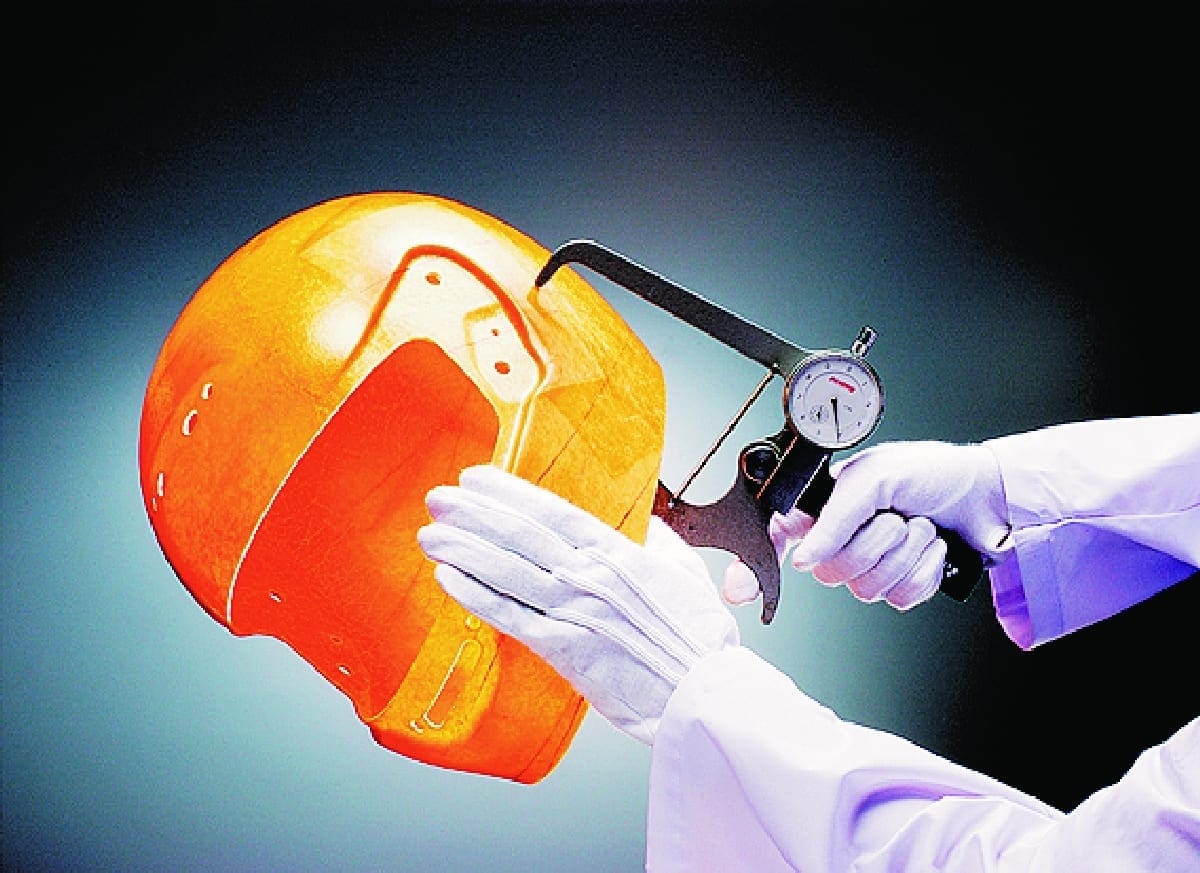
Q&A
What job does a crash helmet do?
Shoei believe a helmet should offer two types of protection, passive and preventative. Passive is when you’re involved in a crash and for us passive protection is about passing ECE 22.05, the minimum safety requirement for a helmet in Europe, to the highest standard and beyond, and therefore providing the ultimate protection in the case of an accident.
To exceed the standard, Shoei carry out extra testing. For example they use different shaped anvils to simulate a crash, a flat anvil represents a floor and a kerbstone, stuff that you come into contact with in real life. They also do an incredible amount of batch testing. You need to do that for ECE22.05, but Shoei write off 4000 more helmets per year as part of their own ongoing quality control procedure, whether that be in drop testing, pull testing or whatever.
Then you have preventative protection, which is all the stuff a helmet has to do when it’s on your head and not crashing, which is the majority of a helmet’s Iife. This means having a helmet that when you’re riding is not causing you any distractions at all, whether this is wind noise, vibration, buffeting, lack of cooling, visor misting, stability— all things which can cause you to lose your concentration.
What is ECE22.05?
ECE22.05 came about from all the European standard agencies getting together and trying to create a ‘real world’ test and therefore the minimum safety standard that all crash helmets sold anywhere in Europe must meet or exceed.
What goes into making a decent crash helmet?
Basically you can break it down to six different components which are, in no particular order, the visor, the protective outer shell, the inner shell (or EPS liner) which does all the shock absorption on impact, the comfort padding that makes it comfortable to wear, a ventilation system, and the retention system.
How long does it take to make a crash helmet?
With a Shoei it takes about seven days to hand build a helmet, although you must appreciate that the precision involved is amazing. It spends about four days being painted and lacquered for example. Quality control is present at every stage, from getting the raw materials in to polishing the finished helmet and packing it into its box. Every bit of work is hand signed by the person who has done it, and if it’s not right it goes back to them for rectification or if that’s not possible, it goes into the bin.
What are Shoei helmets made from?
The outer shell on all Shoeis are made of fibreglass, although the top of the range X-Spirit also has carbon in it as well. The outer shell needs to be tough to stand up to everyday life and protect the EPS liner inside, a bit like an eggshell. The fibreglass composite is strong; it spreads any impact across the shell and EPS beneath it, and it’s lighter compared to thermoplastic. Thermoplastic helmets are also susceptible to solvents, for example glue used on stickers or if you have petrol on your gloves and touch your helmet; over time it’s going to start to degrade the quality of it and therefore compromise the safety of your crash helmet,
Technology has improved in fibreglass helmets over the years. For example, with Shoei they can now reduce the thickness of the outer shell In less vulnerable places to lower the helmet’s weight without compromising the structure or your safety.
Are spoilers only for show?
Shoei are the only helmet manufacturer with their own wind tunnel used for testing and as such any spoilers or shapes on a Shoei helmet are put there for a reason, not because they look good. The wind tunnel is how they came up with the pod-less visor system, to reduce wind noise and buffeting, and also how they improved ventilation. At 60mph the X-Spirit will take 20 litres of air through the helmet in one minute. As you can see from the cutaway helmet’s blue lines, there are ventilation intakes and exhausts to keep your head cool and you comfortable; they help keep the visor clear and also there are some that don’t go over your head but are there simply to stabilise the helmet at speed, so the air is not all forced around it.
The spoiler, or diffuser, also helps stability at speed. With regard to whether these will affect you in an accident— no. In the past some manufacturers have built such things into the shell, but if they are simply stuck on correctly they should break clean off in an accident causing you no problems at all.
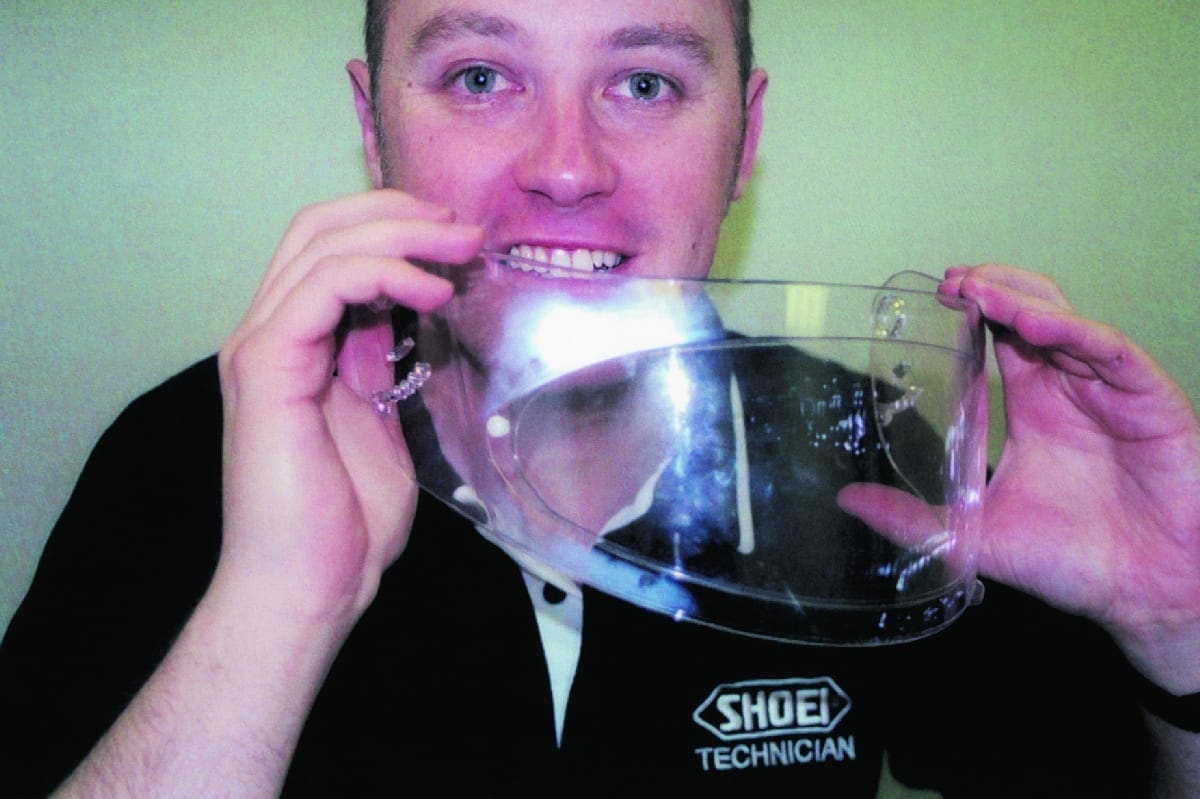
What is an EPS liner?
The bit that does all the absorption in an impact is the EPS (expanded polystyrene) liner, or inner shell, and so that not just one part of the EPS is doing all the work the outer shell spreads the impact. However, it’s a bit more tricky than ‘just’ polystyrene.
Your head is at its weakest from the middle of the top, around to the nape of your neck, so if you take an impact there your skull is less likely to protect you than if you take one at the front (which is why you head-butt people using your forehead!).
As a result, in Shoei helmets you get either two or three different densities of polystyrene, depending on the model. You have harder, more rigid polystyrene on the outside, just inside the shell, as this absorbs the immediate impact. The bit next to your head, however, is softer to withstand more impact absorption, preventing the blow from transferring through to your head where your skull is not as protective naturally.
Don’t forget, in an accident there are two impacts to protect against, one from the outside and your head from the inside, so you need a helmet designed to cater for both. This is easier to see in helmets like Shoeis where the liners are separate pieces as opposed to one-piece liners found on some cheaper helmets.
How do Shoei create different sized helmets?
We use different shell sizes and the reason for that is that if you pad out a helmet, the padding is the first thing to ‘give’ when using a crash helmet so the fit would deteriorate faster. Also, if you have a ‘small’ head you don’t need a giant crash helmet that weighs a ton and looks out of proportion to the size of your body! Shoei are sized for the people who are wearing them. In our range there are three or four shell sizes from XS to XXL, depending on the model.

Do sizes differ around the world?
Shoei have done a lot of research into head sizes and calculated that there are different head shapes around the world, including Middle-far Eastern, North American and us, the Europeans. If you buy a helmet from Japan, firstly it won’t be EC 22.05 approved and therefore won’t be legal to wear in the UK. The second thing is that the head shape and design of the padding would be different. If you are a size ‘Small’ in the UK a ‘Small’ in Japan would probably be too tight. Shoei are one of the few companies who can produce helmets to pass specific standards for each country, rather than just one all-encompassing helmet to go around the world.
How important is the comfort liner?
Very — because if the helmet is not comfortable you will be distracted and that may lead to an accident. Our top of the range sports helmets have a wicking liner designed to take the sweat away from your head. In our other less race-orientated Shoei helmets the liners are more plush. A lot of helmets are just a bit of foam and material and rely on your face to shape them. Others, like Shoei’s for example, are all 3D shaped up to three densities of foam for a good fit, and they also reduce vibration because they are shaped. All ours have removable cheek pads too for cleaning, or different thicknesses.
What’s the difference between the way straps fasten?
Shoei now only use the Double ‘D’ ring system. There was not a problem with the seatbelt clips in what they did, however through extensive research, Shoei discovered that people wanted to replicate the fastening system of racers and for this reason the Double ‘D’ system was used across the board. An advantage is that everytime you fasten a Double ‘D’ ring system, it’s a perfect tight fit.
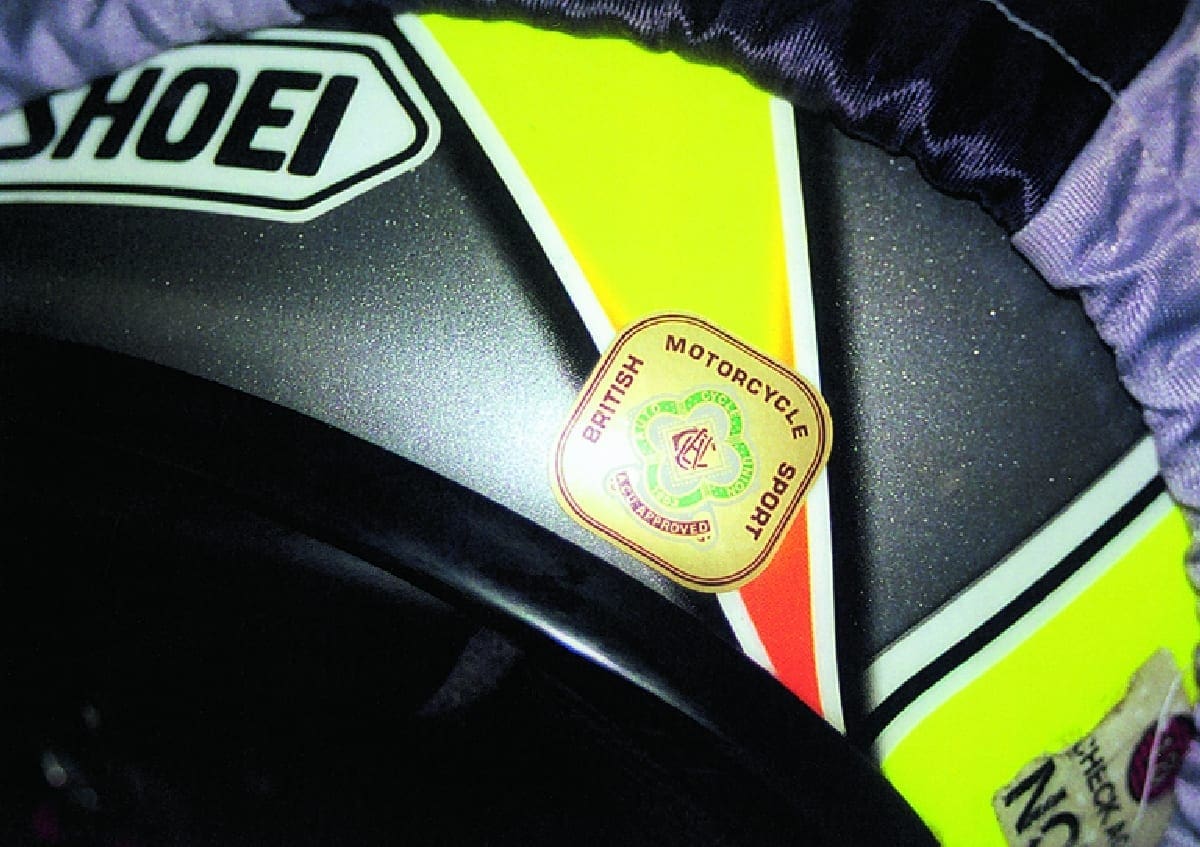
Once you’ve bought one, is the life span of a helmet still five years?
Yes it is, but everybody uses their helmets differently so it depends. If you’re going to use it every day of the week I’d suggest you change it after two years. If you’re going to use it weekends, occasionally during the week and you look after it, then you should get five years out of it.
What you have to remember is people tend to keep a crash helmet for a longtime; it’s not something that you tend to buy every week, month or even every year. So what you want is confidence that the thing is not going to degrade over time, and a large proportion of that is down to you looking after it properly; keeping it clean, keeping it dry, keeping it warm in a room temperature environment, in its bag, out of direct sunlight — all of things can have a negative effect on any material and the more you look after it the longer it will last and the better it will protect.
What is the best method for cleaning a helmet?
As with all things you should really check the manufacturer’s recommendations first. At Shoei we recommend that for removable linings you use luke-warm water, a mild detergent like baby shampoo and then leave it to dry naturally. For our helmets where the skull cap doesn’t come out, take it into the shower with you, wash it as above, squeeze out excess water gently and let it dry naturally. Then be absolutely disgusted with the colour of the water that’s come out of it!
For the outside too, a water and a mild detergent, like washing up liquid. A tip for cleaning your visor is use your fingers. lf there’s a bit of grit on there you won’t feel it with a sponge and scratch it, but you will with your fingers. Again, let it all dry naturally.
Should you always replace a helmet if you drop it, from whatever height?
Once a crash helmet has done its job, it won’t do it again. The EPS does not expand again after it has absorbed an impact and because you can’t always tell what’s happened you should always really replace a helmet after an impact of any type.
So they are delicate bits of kit then?
You’ve really got to treat crash helmets with ultimate care so that they can protect you to the best of their ability. Hanging it from handlebars can compact the EPS. Every time you shove your gloves inside your helmet you are probably compacting the EPS ever so slightly, and you want as much protection as possible from your helmet should you need it. Your gloves may have petrol on them too and while that won’t attack a fibreglass outer shell, it may begin to affect the polystyrene inside. Besides, you know where you’ve been with your gloves — do you really want to put your head in your helmet after they have been in there?
Finally, what advice would you give to anyone buying a new helmet?
I would look for a brand that you can trust, and one that fits you. In my opinion, of course, you should go to a Shoei ‘concept store’ which you can find via our dealer locator on our website, which have all got trained technicians that can fit you out properly with a helmet. But you’ve got to try a helmet on and buy the actual one that fits you.
A GUIDE TO HELMET BUYING
• Never buy a secondhand helmet because you simply don’t know its history. Damage from drops and crashes may not be immediately apparent, and besides it’s already ‘moulded’ itself to someone else’s head.
• Never choose one just because it looks nice!
• Always try it on for the correct size. Different brands may have different sizes so don’t take anything for granted. And always buy the actual one you have tried on because you know it fits correctly, not another one in the same size.
• The helmet should be a snug fit and you should not be able to move it backwards and forwards or from side to side when the strap is done up, yet not restrict your head from turning to observe other road users. Don’t forget, the padding will bed in around your head and face. A loose or unfastened helmet may come off in an accident.
• Check the helmet (and visor) for type approval (the minimum in the UK being ECE 22.05).
• Helmets awarded an ACU Gold sticker have been tested and approved for racing in the UK and so use this as a sign of extra quality (more next month).
• Try to avoid mail-order and internet auction sites. These helmets could come from anywhere in the world, be any age and, apart from size issues (the same size can differ from one manufacturer to another, and between continents too), most importantly they may not meet safety standards.
• Try to get fitted properly by a trained technician who knows how to fit helmets. Approved Shoei dealers in the UK are trained to fit crash helmets correctly. If you are in any doubt, contact the manufacturer and ask for your nearest helmet technician. After all, what price your head?
With thanks to Rob Fairburn at Feridax for his assistance with this article. For further details about Shoei in the UK, or to locate your nearest dealer, visit www.feridax.com or call 01384413841.



